Vinegar and Sweet Sake: A Flavorful Combination
Nov 04,2021
Vinegar and Sweet Sake: A Flavorful Combination
Nov 04,2021
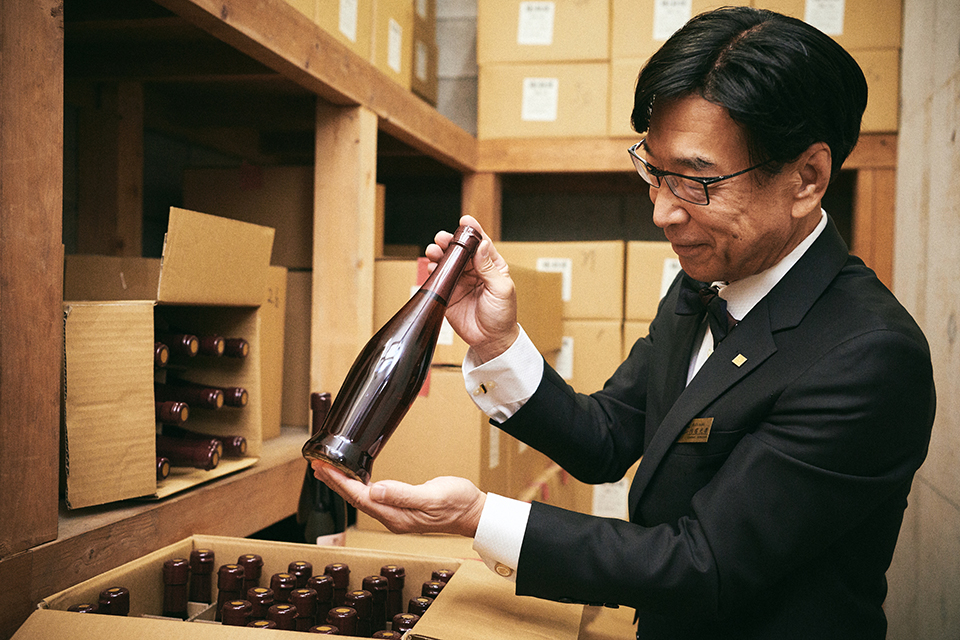

Most homes keep a stock of vinegar in the pantry. It’s a great seasoning, of course, and more and more people these days are getting into the habit of drinking it for health reasons as well. Self-styled vinegar sommelier Uchibori Mitsuyasu is a veritable evangelist for this ubiquitous condiment. Here he tells the story behind the birth of uresu sweetened vinegar, which was inspired by the blended vinegar used back in the days when sugar was a precious commodity. He shares his passion for vinegar. And he describes ways to enjoy vinegar that you might want to make your own.
Vinegar sommelier Uchibori Mitsuyasu keeps himself busy spreading the word about the magic of vinegar. Among other endeavors, he makes vinegar himself, develops new products, and organizes special events. The story goes back to 2003, when he opened a vinegar specialty store called Oaks Heart in Nagoya. But drinking vinegar was not a big thing back in those days.

Vinegar sommelier Uchibori Mitsuyasu, who devotes himself to spreading the word about the condiment’s magic
“The store would give out recipes featuring vinegar to encourage people to make more use of vinegar in their cooking. But people were reluctant to try vinegar in their home cooking. Their knee-jerk reaction was, ‘What do I do if I ruin the entire dish?’ So I decided to get them to experience the taste of vinegar by actually drinking it, and the store started giving out samples of vinegar to drink. Then the idea of drinking vinegar took on a life of its own and really caught on.”
Mr. Uchibori has worked on over a hundred varieties of vinegar to date, including vinegar for home cooking and “dessert vinegar” for drinking. In light of his extensive experience, what does he consider to be the hallmarks of the ideal vinegar?

“What I aim for is a ferment completely free of impurities. Vinegar isn’t something that we humans make; it’s created through the action of microorganisms like koji fungus, yeast, and acetobacter. If it’s contaminated with other microbes, the unadulterated tartness that you ideally want will be compromised. All we humans can do is create the right environment for the vinegar to ferment in.”
All the vinegars that Mr. Uchibori has worked on have been produced at Uchibori Vinegar Inc.’s two factories in the mountains of Gifu and Nagano. Vinegar made in surroundings blessed with crystal waters and clean air, he points out, has a taste free of impurities. Vinegar is generally thought of as being sour, but Mr. Uchibori’s vinegars are distinguished by their mild acidity.
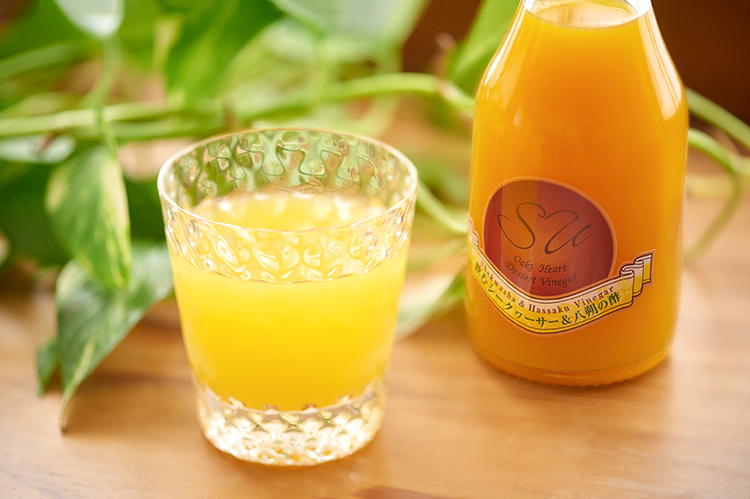
Drinkable Shekwasha & Hassaku Vinegar, a “dessert vinegar” available only at certain times of year. Recommended way to serve: one part dessert vinegar to four parts water, soda, milk, or soy milk
“The first thing I look for when making vinegar is sweetness. Vinegar is alcohol fermented by acetobacter bacteria. The alcohol from which vinegar is derived is produced in turn through the action of brewer’s yeast on sugar. So when we make fruit vinegar—Drinkable Shekwasha & Hassaku Vinegar, for example—we start by making alcohol. That involves separately fermenting the juice (that is, the sugar) of shekwasha and hassaku (both types of citrus fruit). Fermenting fruit or fruit juice yields a vinegar with a pronounced flavor.
“So what happens when fruit or fruit juice is fermented? The sweet notes and sour notes don’t separate on the palate. You don’t get a vinegar where sweetness alone predominates or just the sourness lingers. You get a cohesive flavor profile, making the vinegar easy to drink.”
The innate sweetness of the ingredients from which vinegar is made is thus a key factor. That insight led Mr. Uchibori to develop a type of sweetened vinegar called uresu. This is made by combining pure rice vinegar with the sweet fermented beverage amazake and letting the blend age. The inspiration behind it was the sushi eaten by the common people of the Edo period (1603-1867)—not the sushi we know today, but fish pickled in rice.
“This type of sushi was popular among the common people, and it must have tasted very good. But making decent-tasting sushi rice should have required sugar. Back then, though, sugar was an exorbitantly expensive commodity. That’s why I hit on the idea of amazake. I came up with my own theory that since amazake was a common drink in the Edo period, maybe it was used to sweeten sushi rice. To test my hypothesis, I tried filtering and boiling down amazake, then adding it to pure rice vinegar. The resulting vinegar blend tasted deliciously sweet, even without sugar. I developed uresu based on the same formula.”
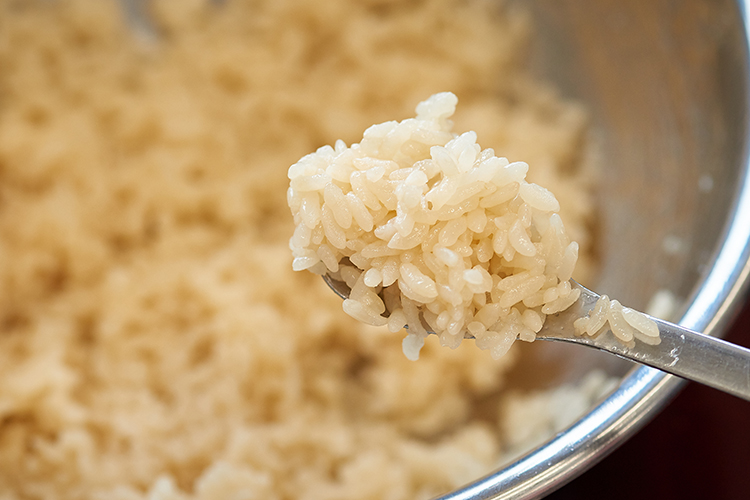
Sushi rice made with uresu vinegar tastes mildly sweet and goes excellent with fish.
Uresu means literally “matured vinegar,” and as the name suggests, it changes in color and taste as it ages.
“They didn’t have refrigerators back in the Edo period, so with that in mind, I bottled the freshly made sweetened vinegar for ease of storage and aged it in a warehouse. And here is what I found. At first the vinegar was a clear liquid, but it turned a beautiful shade of red after being aged for three years. After several more years, it turned jet black. The taste likewise changed.”
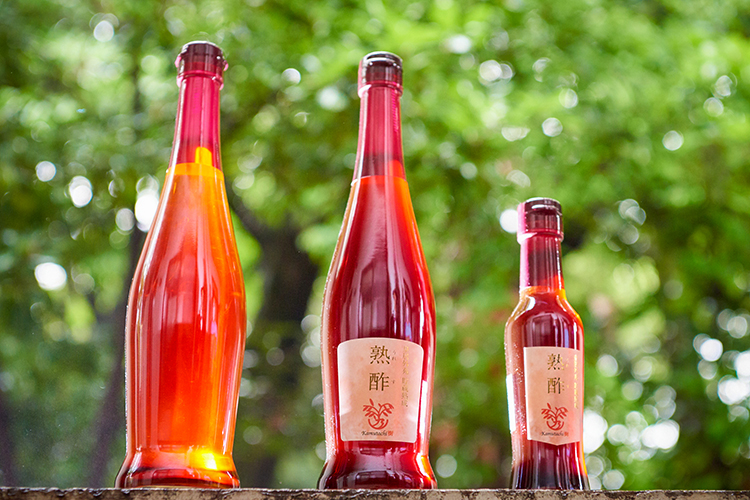
Mr. Uchibori wanted to test his hypothesis on the site where the city of Edo had once stood. He therefore decided to age the vinegar for three years in a cellar in Kitanomaru Park, part of Kokyo Gaien National Garden in Tokyo, before putting it on sale. The beautiful red of uresu vinegar is thus a product of Kokyo Gaien National Garden’s natural environment. Moreover, Mr. Uchibori is uncompromising about the rice used to make the vinegar.
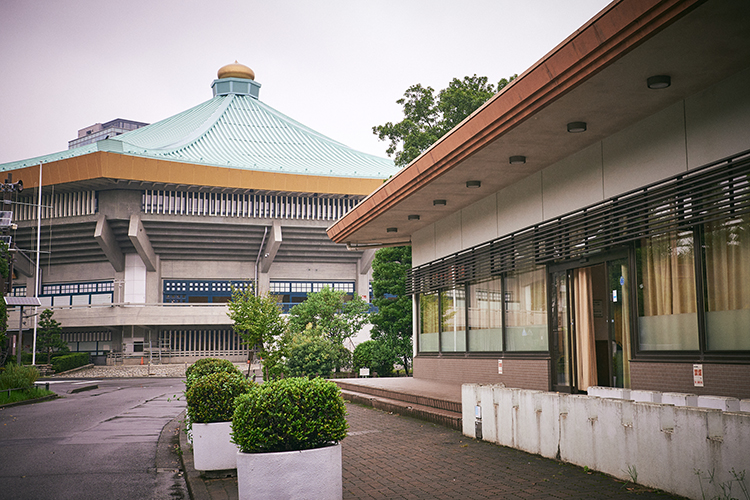
Uresu vinegar is aged in a cellar in Kitanomaru Park, from which the famous Budokan arena can be seen. Echoes of old Edo!?
“Uresu is made with Koshihikari rice grown in Iiyama, Nagano Prefecture. I chose this rice for several reasons. It’s been selected for presentation to the Imperial Family. It contains little protein, which makes it suitable for both cooking and brewing. And it’s grown in natural conditions conducive to controlling the water temperature in the rice paddies, the make-or-break factor in producing delicious-tasting rice.
“To sweeten rice, by the way, what you need is koji fungus. We inoculate the rice with koji spores to make both amazake and the pure rice alcohol for fermenting to produce vinegar. The sweet notes and sour notes in uresu thus both come from the same source. So as with fruit vinegar, they don’t separate on the palate. And uresu yields an even mellower flavor because it’s aged.”
Vinegar is a common seasoning, yet many people are unsure what to do with it. When they try incorporating it into their cooking, they find that its uses are so limited that they don’t know how to utilize it effectively. Mr. Uchibori explains why.
“The difficult thing about using vinegar in cooking is that it may act as either a suppressant or an enhancer depending on what you combine it with. In the case of vinegared mackerel, for example, the vinegar masks the fishy smell. But when you sprinkle it on a slice of orange, it plays up the citrous aroma. Vinegar thus acts in many different ways. It enhances sweetness, softens ingredients, eliminates greasiness, and solidifies protein. The catch is, there are no hard and fast rules, so you just have to learn by experience. The interesting thing about vinegar is that it changes character depending on what you combine it with, which makes it fun. But I guess that’s also why people say it’s difficult to use.”
So what unusual combinations of vinegar and other ingredients does Mr. Uchibori recommend?
“Vinegar goes wonderfully with anything oily. I often combine it with croissants or creamy chocolate, both pairings I’m personally fond of. Croissants contain butterfat and chocolate contains cacao butter, and adding vinegar gives them a pleasantly salad-like flavor. It’s like a dressing. I’d also recommend adding vinegar to ice cream and adzuki beans.
“By the way, if you put too much vinegar in a dish, the one thing you mustn’t do is dilute it with water. It will make the pungent vinegary smell stand out even more. Instead of just diluting the vinegar, add something with an acidic flavor like yuzu, sudachi, or lime. That will suppress the piercing odor.”
Fruit vinegar is another great way to turn any ingredient into a salad ingredient. It also makes a delicious drink when mixed with water, soda, milk, or beer.
Vinegar has many different uses as a seasoning. Uresu vinegar is particularly handy, because it brings out the flavor of the ingredients with its tartness that’s not too tart and trace of sweetness. Here are the optimal ratios of uresu vinegar to other ingredients, according to Mr. Uchibori.
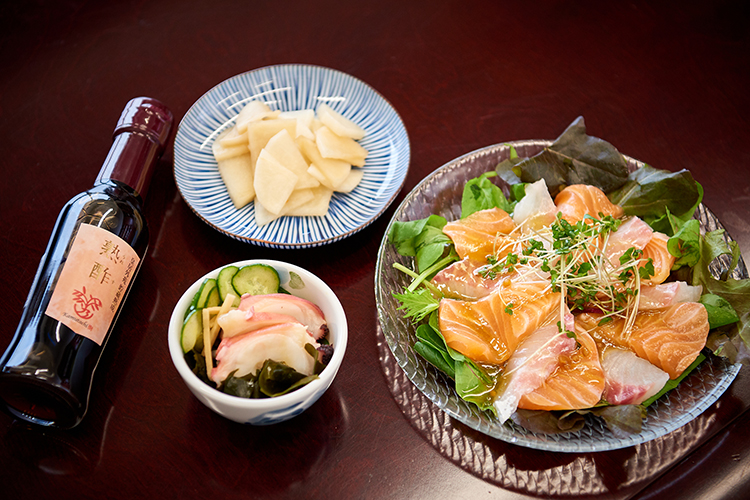
・When used in sunomono (vinegared salad)
2 tbs uresu to 1 tbs soy sauce
・When used for sushi
5 tbs uresu to 2 tbs sugar and 1½ tsp salt
・When used for Japanese-style carpaccio sauce
2 tsp uresu to 2 tbs olive oil and 1 tsp soy sauce
・When used for daikon salad
2 tbs uresu to 1 tbs salt
Japan has lots of seasonings produced by fermentation, including miso, soy sauce, and mirin (sweetened sake). But vinegar is one of the very few seasonings that can be made from many different cereals and fruits.
“Nowadays, vinegar is used mainly to add tartness. But I think it would be great if it came to be used in other ways—like taking advantage of its properties other than tartness, say, or using a particular variety of vinegar to achieve a particular flavor. My dream is that one day, vinegar will be used just like a spice.”
Vinegar can be enjoyed in various flavors depending on what it’s made from. Why not make more use of it in your kitchen?
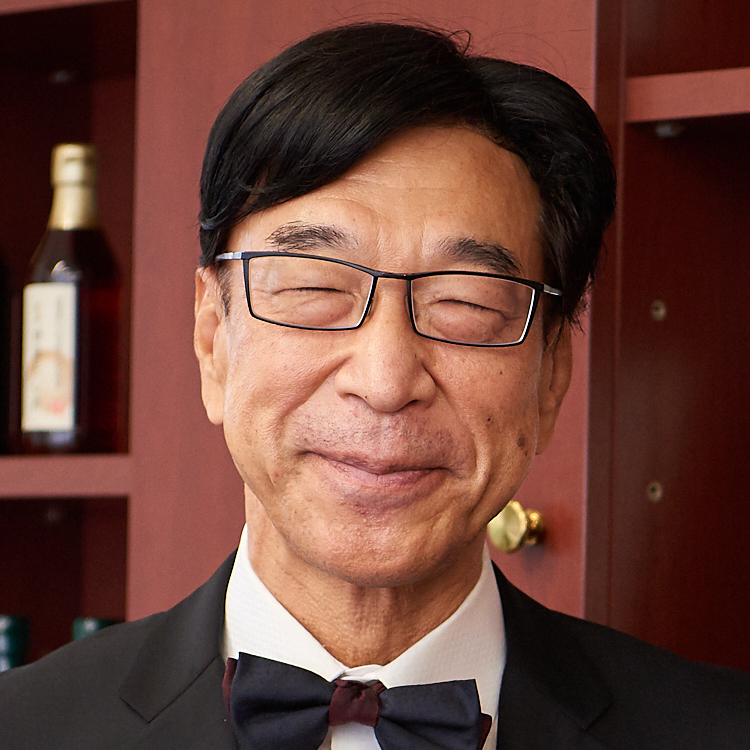
Vinegar sommelier and President and CEO, Vinegar and Life Research Lab Co., Ltd.
In 2003, Uchibori Mitsuyasu opened Oaks Heart, a specialty store dealing in “dessert vinegar,” a completely new type of vinegar that is for drinking. In 2006, he received the Minister of Agriculture, Forestry and Fisheries Award for his development work. He continues working energetically to spread the message about the joys of vinegar and what makes it special.